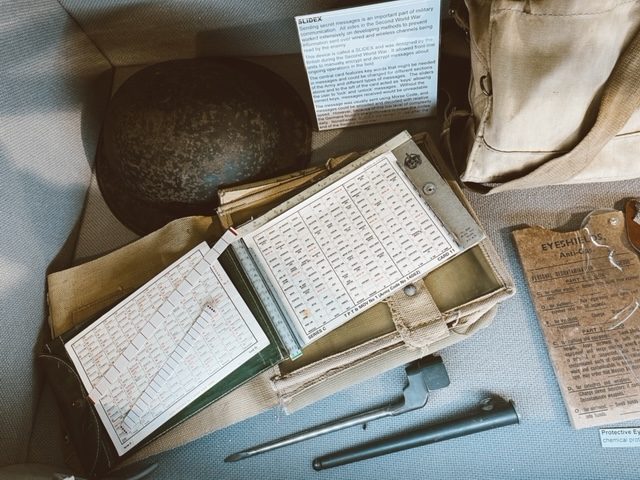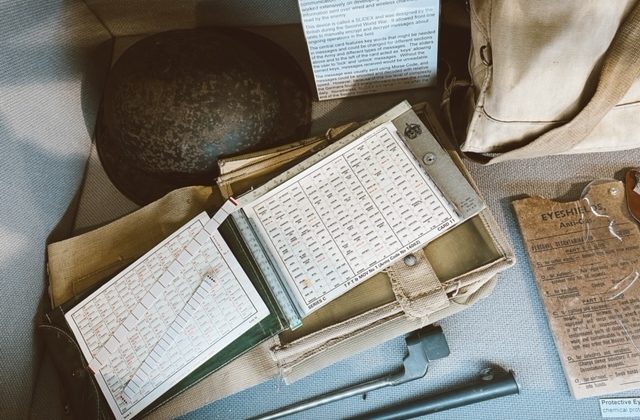Sending secret messages is an important part of military communication. All sides in the Second World War worked extensively on developing methods to prevent information sent over wired and wireless channels being read by the enemy.

This device is called a SLIDEX and was designed by the British during the Second World War. It allowed front-line units to manually encrypt and decrypt messages about ongoing operations in the field.
The central card features key words that might be needed in messages and could be changed for different sections of the Army and different types of messages. The sliders above and to the left of the card acted as ‘keys’ allowing the user to ‘lock’ and ‘unlock’ messages. Without the correct keys, messages received would be un-readable.
The message was usually sent using Morse Code, and messages could be encoded and decoded with relative speed. However, because of this low level of complexity the Germans found it straightforward to breach the codes daily. Nonetheless, SLIDEX did remain in use after the end of the Second World War.
Chris, our former Trainee Curator (2018-2019), created this video explaining how the Slidex works.

